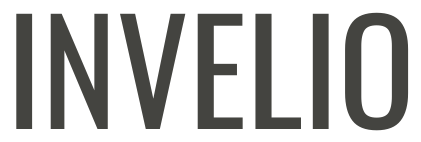Discover practical tips and strategies how to save 1000 a month, empowering you to achieve financial goals and build a secure future.
Establishing a Solid Budgeting Foundation
To save $1000 a month, I found that establishing a solid budgeting foundation is crucial. This involves understanding my income and expenses, setting clear financial goals, choosing an effective budgeting method, and utilizing various tools for efficiency.
Understanding Your Income and Expenses
First, I needed to get a clear view of my income and spending. I listed all my sources of income, including my salary, any side gigs, and passive income. Then, I tracked my expenses meticulously for a month, noting every dollar spent.
Next, I categorized my expenses into fixed costs (like rent or mortgage, utilities, and insurance) and variable costs (like groceries, entertainment, and dining out). This helped me see where my money was going and identify areas where I could cut back.
Setting Achievable Financial Goals
Setting financial goals gave me a clear sense of direction. I broke down my goals into short-term (e.g., saving for a vacation) and long-term (e.g., building an emergency fund).
I aimed to save $1000 a month by reducing unnecessary expenses and increasing my savings rate. One effective method was the 50/30/20 rule: I allocated 50% of my income for necessities, 30% for discretionary spending, and 20% for savings and debt repayment.
Choosing the Right Budgeting Method
Different budgeting methods cater to different needs, so I chose one that suited my lifestyle and goals. The envelope system involves using cash for budget categories within envelopes. This method encouraged me to stick to my limits.
Another popular method is zero-based budgeting, where every dollar is assigned a job. I ensured that my income minus expenses equaled zero, giving every dollar a purpose. Using a hybrid of these methods helped me stay disciplined and meet my savings goal.
Utilizing Budgeting Tools for Efficiency
To make budgeting more efficient, I leveraged various tools and apps. Personal Capital is a robust financial planning app that tracks my net worth, spending, and savings. It provides insights on investment performance and helps maintain financial health.
Budgeting apps like YNAB or Mint simplify tracking income and expenses. These apps categorize transactions automatically and generate reports on spending patterns. For those who prefer simplicity, digital spreadsheets can also be effective for maintaining a budget.
Establishing a solid budgeting foundation has been essential in my journey to save $1000 a month, providing me with the structure and tools needed to manage my finances effectively.
Strategies for Increasing Your Savings

To save $1,000 a month, it’s essential to look at every aspect of your financial habits. Here’s a breakdown of effective strategies, from cutting unnecessary spending to boosting your income.
Optimizing Your Spending Habits
I start by reviewing my monthly expenses. Small savings add up quickly. Cutting out daily coffee purchases can save around $100 a month.
I also trim my subscriptions and memberships. Do I really need multiple streaming services? I often find that I can save significant amounts by eliminating or downgrading some of these recurring costs.
Meal prepping is another big saver. Instead of eating out or ordering in, I plan my meals and pack lunches, which saves me $200 to $300 a month. Using coupons and sales promotions further reduces my grocery bill.
Earning More Through Side Hustles and Passive Income
To boost my savings, I look into side hustles. Driving for Uber or Lyft can add a few hundred dollars to my income each month. Selling items I no longer need through online marketplaces also brings in extra cash.
Passive income streams, like renting out a spare room or doing tasks through platforms like Instacart, provide consistent boosts. I focus on activities that fit my schedule and interests, ensuring that additional work doesn’t feel overwhelming.
Reducing Debts and Avoiding High-Interest Costs
Debt reduction is an essential part of my savings plan. High-interest debt, like credit card debt, can quickly erode savings. I prioritize paying off these debts first to stop interest from piling up.
I negotiate lower interest rates on my credit cards and consider transferring balances to cards with 0% introductory rates. This strategy saves money on interest and accelerates debt payoff.
Additionally, I avoid taking on new high-interest debts and focus on paying off existing ones. This not only saves money in the short term but also secures my financial future.
Automating Savings and Monitoring Your Progress
Automating my savings has been a game-changer. I set up automatic transfers from my checking to my savings account right after each paycheck hits. This way, I ensure that I save first before spending.
I choose a high-yield savings account for better interest rates. These accounts earn more over time, making my money work harder for me.
By regularly monitoring my progress, I stay motivated. I use budgeting apps to track my spending and savings. Seeing the numbers grow reinforces my commitment to achieve my $1,000 monthly savings goal.
Practical Tips for Day-to-Day Saving

To save $1,000 a month, it’s essential to focus on everyday habits and decision-making. Simple actions like smart grocery shopping, reducing subscriptions, and utilizing discounts can significantly impact your monthly savings.
Smart Grocery Shopping and Meal Planning
I always start by creating a list before heading to the grocery store. This helps me avoid impulse buys and stick to what I truly need.
Planning meals for the week allows me to buy in bulk, which is often cheaper. For example, buying pantry staples like rice, beans, and pasta can save more money over time.
I keep an eye out for sales and use coupons whenever possible. Combining store sales with manufacturer coupons maximizes savings.
Cooking at home more often than eating out is another way I save money. This ensures that I use all the ingredients I’ve purchased and minimizes waste.
Cutting Costs on Subscriptions and Memberships
Every now and then, I review all my monthly subscriptions and memberships. Many of us have services we don’t use regularly, so I cancel or pause them to focus on essentials.
Switching to a family plan or sharing accounts with friends can also reduce costs. For example, music streaming services often offer family plans that are more economical than individual ones.
I also take advantage of free trials but ensure I cancel before they convert to paid subscriptions. By carefully managing these, I maintain only what I truly need.
Maximizing Discounts and Reward Programs
I’m always on the lookout for discounts and rewards programs to stretch my dollars further.
Many stores offer loyalty programs that give cashback or discounts on future purchases. Signing up for these is a no-brainer for me.
Credit card reward points can be a gold mine for extra savings. I make it a habit to use credit cards with good reward programs for my purchases and then pay off the balance each month to avoid interest.
Lastly, I browse cashback websites and apps, like Rakuten, before shopping online. This often gives me a percentage of my purchase amount back, providing an easy way to save extra money.
FAQ – How to Save 1000 a Month
What is the 50 30 20 rule?
The 50-30-20 rule suggests allocating 50% of income to necessities, 30% to discretionary spending, and 20% to savings.
How much should you have saved by 30?
By 30, aiming to have a savings cushion equivalent to your annual income is a common goal.
Is 100k in savings a lot in the UK?
Saving £100k in the UK is substantial, providing financial security and options for investments or major expenses.
If you liked this blog post about the topic: How to Save 1000 a Month, don’t forget to leave me a comment down below to tell me about your experience with it. Or have a look at my other articles:
- How To Budgeting for Dummies
- Budget Summer Vacations: Affordable Destinations
- Home Wedding Ideas on a Budget: Stylish Celebrations
- What Are Some Key Components of Successful Budgeting: Your 5 Step Starter Guide
Feel free to also check out our other Articles from the category “Budgeting“ and don’t forget to follow us on Pinterest.


